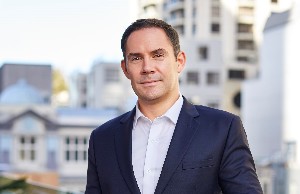
David Fyfe
You launched the Mint NZ equities socially responsible investment strategy as a wholesale option in 2017. Why did retail investors have to wait so long?
We established the NZ SRI Equity Fund more than three years ago. The fund was designed to meet the specific needs of the wholesale market where environmental, social and governance (ESG) factors have been an important consideration for a long time.
Our aim was to create a SRI strategy for NZ equities to institutional standards as a natural complement to the already successful Mint investment process. We had strong support as at day one from wholesale clients who were, perhaps, local leaders of the ESG movement. At launch, the responsible investment concept was only just gaining traction in the retail market, which probably wasn’t quite ready for a specialist, sophisticated SRI product at the time.
But a lot has changed since 2017. Responsible investment is now a mainstream topic, although there remains much confusion about what it actually means. Retail investors and financial advisers are, however, increasingly looking for options that address ESG issues in a fully transparent and understandable way.
The Mint SRI fund meets the growing demand from retail clients for a credible, practical solution for managing NZ equities to high responsible investment standards.
It helps, too, that we can point to a three-year performance track record that is often required for acceptance in the retail market.
What does ESG mean for you in the context of NZ shares?
The explosion of interest in responsible – or sustainable, or socially responsible investing over the last couple of years has been remarkable, and certainly a positive development.
However, there isn’t really a single or clear definition of ESG.
For some, responsible investment is only about avoiding the wide universe of so-called ‘sin stocks’ from portfolios; for others, it’s more important to integrate ESG into the wider investment process; and a few are simply changing the label but not the contents.
The truth for most responsible investment styles probably lies between the pure ‘exclusionists’ and ESG integration: every manager has a duty to explain to investors where they sit on this spectrum and how they implement their stated philosophies.
At Mint, we do have some negative screens – covering sectors such as tobacco, gambling and fossil fuel extraction – but I would say we are more at the ESG integration end of the scale.
We believe companies that are better risk managers have better outcomes in the long run. ESG factors are therefore a specific set of risks that need to be considered, managed and monitored. Our process in the NZ equities market targets overweight exposures to companies we believe are better ESG performers.
How do you measure NZ companies on ESG factors?
Unlike in offshore markets, there is very little reliable third-party ESG data on NZX-listed firms.
Consequently, we’ve developed our own scorecard that measures firms across the E, S and G parameters. As well as publicly available information, our research process relies on a bespoke questionnaire we’ve continually refined over the years that analysts complete on all equities we cover. Mint also has built an intimate knowledge of most NZX companies, so we’re attuned to ESG nuances.
Each company ESG assessment is included in our qualitative scoring based 50/50 on respective qualitative and quantitative scores.
As corporate reporting standards improve over time – and widen beyond the large firms who currently are more likely to supply good ESG data – we expect our analysis will acquire even further depth.
For example, NZX listed firms will have to comply with the government’s mandated reporting on climate-related financial disclosures from 2023. In short, the metrics to assess climate related risks and their scope of greenhouse gas emissions.
What does the Mint SRI Fund do differently?
Importantly, Mint applies the ESG process across all strategies – it’s a key component of our investment style and is one of the reasons why we have achieved an A-rating under the UN Principles of Responsible Investment (UNPRI) assessment.
But the SRI fund takes the ESG tilt up a notch. When constructing the portfolio, the SRI fund doubles the weight to ESG factors compared to our regular NZ equities strategy.
Effectively, it’s a high conviction ESG portfolio, creating a real point of difference from competitor offerings.
We’re also totally transparent about how we manage the SRI fund with all up-to-date information and our SRI policy available, on the Mint website.
What are the main ESG factors you cover?
Obviously, climate change is top-of-mind now for both companies and investors. As mentioned earlier, the incoming emission reporting requirements will eventually lift the quality of information available to ESG investors – but many NZ companies are trying to get ahead of the curve already.
The G factor – governance – has always been a critical area of attention for responsible investment strategies, especially given its strong historical correlation with financial performance. We keep a close watch on items such as executive remuneration as well as board diversity, tenure and skills.
However, there are several other emerging themes that fall under the ‘social’ side of the equation including how companies treat employees or manage supply chains for issues like modern slavery.
Recently, for instance, we increased our exposure to Kathmandu supported by, amongst other factors, the company’s strong ESG record. This includes the B Corp certification, one of the highest standards of verified ESG performance and transparency.
As more retail investors seek ESG solutions, what should they expect from fund managers?
‘Greenwashing’ is an acknowledged global problem as ESG demand has increased, prompting regulators – including our own Financial Markets Authority – to lay down industry rules.
Regulatory pressure or not, fund managers offering responsible investment strategies should be able to ‘show and tell’ what they mean by ESG and how they put theory into practice.
Investors and advisers do need to look beyond the label but it’s up to fund managers to ensure there’s genuine ESG content inside the tin.




Comments
No comments yet.
Sign In to add your comment